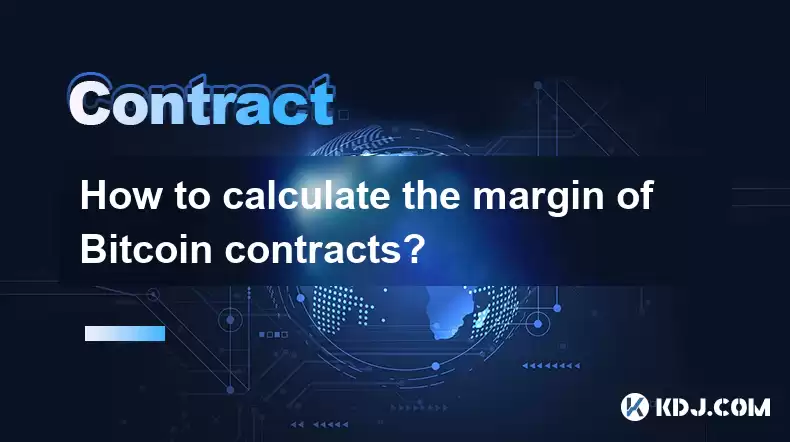-
 Bitcoin
Bitcoin $116700
0.24% -
 Ethereum
Ethereum $3973
4.34% -
 XRP
XRP $3.283
7.68% -
 Tether USDt
Tether USDt $1.000
0.01% -
 BNB
BNB $789.8
2.27% -
 Solana
Solana $176.2
3.31% -
 USDC
USDC $0.9999
0.00% -
 Dogecoin
Dogecoin $0.2238
5.14% -
 TRON
TRON $0.3389
-0.51% -
 Cardano
Cardano $0.7907
4.03% -
 Stellar
Stellar $0.4527
10.02% -
 Hyperliquid
Hyperliquid $41.07
4.27% -
 Sui
Sui $3.794
1.77% -
 Chainlink
Chainlink $19.49
10.40% -
 Bitcoin Cash
Bitcoin Cash $580.9
0.74% -
 Hedera
Hedera $0.2617
4.32% -
 Avalanche
Avalanche $23.41
3.67% -
 Ethena USDe
Ethena USDe $1.001
-0.03% -
 Litecoin
Litecoin $122.4
1.38% -
 Toncoin
Toncoin $3.364
1.49% -
 UNUS SED LEO
UNUS SED LEO $8.988
0.37% -
 Shiba Inu
Shiba Inu $0.00001295
2.82% -
 Uniswap
Uniswap $10.62
5.75% -
 Polkadot
Polkadot $3.922
4.46% -
 Dai
Dai $1.000
0.01% -
 Bitget Token
Bitget Token $4.494
2.15% -
 Monero
Monero $268.0
-1.30% -
 Cronos
Cronos $0.1523
3.68% -
 Pepe
Pepe $0.00001127
4.43% -
 Aave
Aave $285.4
4.85%
How to calculate the margin of Bitcoin contracts?
Bitcoin contract trading requires understanding margin (collateral), initial margin (to open), maintenance margin (minimum to hold), and margin calls (when margin falls below maintenance). Leverage amplifies profits and losses, impacting margin calculations which vary by exchange and include factors like volatility.
Mar 24, 2025 at 03:14 am

Key Points:
- Understanding Bitcoin contract leverage and its impact on margin calculations.
- Defining margin, initial margin, maintenance margin, and margin call.
- Calculating margin requirements for long and short positions.
- Exploring different margin calculation methods used by exchanges.
- Factors influencing margin requirements beyond leverage.
How to Calculate the Margin of Bitcoin Contracts?
Trading Bitcoin contracts involves leveraging borrowed funds to amplify potential profits (and losses). Understanding margin calculations is crucial to avoid liquidation. The core concept revolves around the relationship between the contract's value, your leverage, and the margin you must maintain.
What is Margin?
Margin is the collateral you deposit with an exchange to secure a Bitcoin contract. It acts as a guarantee against potential losses. Insufficient margin leads to a margin call, forcing you to deposit more funds or face liquidation – the automatic closure of your position to cover losses.
Initial Margin vs. Maintenance Margin
Initial margin is the amount required to open a contract. Maintenance margin is the minimum margin you must maintain throughout the contract's life. If your margin falls below the maintenance level, a margin call is triggered.
Calculating Margin for Long Positions:
Let's say you open a long position (betting on Bitcoin's price increase) with 1 BTC contract at $30,000 per BTC, using 5x leverage.
- Contract Value: 1 BTC * $30,000/BTC = $30,000
- Margin Requirement (Initial): $30,000 / 5x = $6,000
- Maintenance Margin: This is typically a percentage of the initial margin, set by the exchange (e.g., 50% of $6,000 = $3,000).
Calculating Margin for Short Positions:
For a short position (betting on Bitcoin's price decrease), the calculation is the same. The contract value, leverage, and margin requirements remain consistent regardless of whether you're long or short.
Different Margin Calculation Methods:
Exchanges might use slightly different methods. Some use a simple leverage-based calculation as shown above. Others might incorporate factors like the volatility of Bitcoin, using more complex algorithms. Always check your exchange's specific margin calculation details.
Factors Affecting Margin Requirements:
Several factors beyond leverage influence margin requirements. These include:
- Volatility: Higher volatility generally leads to higher margin requirements.
- Exchange Policies: Different exchanges have varying margin policies.
- Contract Specifications: The specific terms of the contract influence margin calculations.
- Risk Management: The exchange's risk management system adjusts margin requirements dynamically.
Understanding Leverage and its Impact:
Leverage magnifies both profits and losses. Higher leverage means a smaller initial margin, but it also increases the risk of liquidation. Using 10x leverage instead of 5x would halve your initial margin requirement but double your potential losses if the price moves against you.
What Happens During a Margin Call?
A margin call indicates your margin has fallen below the maintenance level. You must deposit more funds to bring your margin back above the maintenance threshold. Failure to do so results in liquidation. The exchange will automatically close your position to cover losses, potentially resulting in significant losses.
How to Avoid Margin Calls:
- Use Lower Leverage: Start with conservative leverage levels to reduce risk.
- Monitor Your Positions: Regularly check your margin levels and adjust your positions accordingly.
- Understand Volatility: Be aware of Bitcoin's price volatility and adjust your strategy.
- Use Stop-Loss Orders: Set stop-loss orders to automatically close your position if the price moves against you.
- Proper Risk Management: Implement robust risk management strategies.
Frequently Asked Questions:
Q: What happens if I don't meet a margin call?
A: If you fail to meet a margin call, the exchange will automatically liquidate your position to cover losses. This can lead to significant losses.
Q: Can I choose my leverage?
A: Yes, most exchanges offer a range of leverage options. However, higher leverage increases risk.
Q: How is maintenance margin calculated?
A: Maintenance margin is usually a percentage of the initial margin, set by the exchange. This percentage varies depending on the exchange and the specific contract.
Q: Does the margin calculation differ for perpetual contracts?
A: While the fundamental principle remains the same, perpetual contracts often incorporate funding rates into the margin calculation, adding another layer of complexity.
Q: What are the risks of high leverage?
A: High leverage significantly amplifies both profits and losses. It increases the risk of liquidation even with small price movements against your position.
Q: Where can I find the exact margin requirements for a specific exchange?
A: Each exchange will specify its margin requirements on its platform, usually within the trading interface or contract specifications. Review the terms and conditions carefully.
Disclaimer:info@kdj.com
The information provided is not trading advice. kdj.com does not assume any responsibility for any investments made based on the information provided in this article. Cryptocurrencies are highly volatile and it is highly recommended that you invest with caution after thorough research!
If you believe that the content used on this website infringes your copyright, please contact us immediately (info@kdj.com) and we will delete it promptly.
- Coinbase, Cosmos, and dYdX: Navigating the Crypto Currents
- 2025-08-09 06:30:16
- BNB Price, Altcoins, and Predictions: What's the Buzz?
- 2025-08-09 06:30:16
- Crypto Presale Projects Primed for Gains in 2025: A New Yorker's Take
- 2025-08-09 06:50:15
- Ruvi AI: The Millionaire Maker Poised for a Price Spike?
- 2025-08-09 06:50:15
- Cold Wallet, CoinMarketCap, Cardano & XRP: Navigating Crypto's Next Big Wave
- 2025-08-09 07:10:15
- Hedera (HBAR) Price Surge: Market Cap Soars, What's Next?
- 2025-08-09 07:10:15
Related knowledge

What is the difference between realized and unrealized PNL on KuCoin?
Aug 09,2025 at 01:49am
Understanding Realized and Unrealized PNL on KuCoinWhen trading on KuCoin, especially in futures and perpetual contracts, understanding the distinctio...

How does KuCoin Futures compare against Binance Futures in terms of features?
Aug 09,2025 at 03:22am
Trading Interface and User ExperienceThe trading interface is a critical component when comparing KuCoin Futures and Binance Futures, as it directly i...

What is the distinction between mark price and last price on KuCoin?
Aug 08,2025 at 01:58pm
Understanding the Basics of Price in Cryptocurrency TradingIn cryptocurrency exchanges like KuCoin, two key price indicators frequently appear on trad...

What are the specific maker and taker fees on KuCoin Futures?
Aug 08,2025 at 08:28am
Understanding Maker and Taker Fees on KuCoin FuturesWhen trading on KuCoin Futures, users encounter two primary types of fees: maker fees and taker fe...

Can you explain the difference between cross margin and isolated margin on KuCoin?
Aug 09,2025 at 02:57am
Understanding Margin Trading on KuCoinMargin trading on KuCoin allows traders to borrow funds to increase their trading position beyond their actual c...

How can I open a long position on KuCoin Futures?
Aug 09,2025 at 02:07am
Understanding KuCoin Futures and Long PositionsOpening a long position on KuCoin Futures means you are speculating that the price of a cryptocurrency ...

What is the difference between realized and unrealized PNL on KuCoin?
Aug 09,2025 at 01:49am
Understanding Realized and Unrealized PNL on KuCoinWhen trading on KuCoin, especially in futures and perpetual contracts, understanding the distinctio...

How does KuCoin Futures compare against Binance Futures in terms of features?
Aug 09,2025 at 03:22am
Trading Interface and User ExperienceThe trading interface is a critical component when comparing KuCoin Futures and Binance Futures, as it directly i...

What is the distinction between mark price and last price on KuCoin?
Aug 08,2025 at 01:58pm
Understanding the Basics of Price in Cryptocurrency TradingIn cryptocurrency exchanges like KuCoin, two key price indicators frequently appear on trad...

What are the specific maker and taker fees on KuCoin Futures?
Aug 08,2025 at 08:28am
Understanding Maker and Taker Fees on KuCoin FuturesWhen trading on KuCoin Futures, users encounter two primary types of fees: maker fees and taker fe...

Can you explain the difference between cross margin and isolated margin on KuCoin?
Aug 09,2025 at 02:57am
Understanding Margin Trading on KuCoinMargin trading on KuCoin allows traders to borrow funds to increase their trading position beyond their actual c...

How can I open a long position on KuCoin Futures?
Aug 09,2025 at 02:07am
Understanding KuCoin Futures and Long PositionsOpening a long position on KuCoin Futures means you are speculating that the price of a cryptocurrency ...
See all articles

























































































